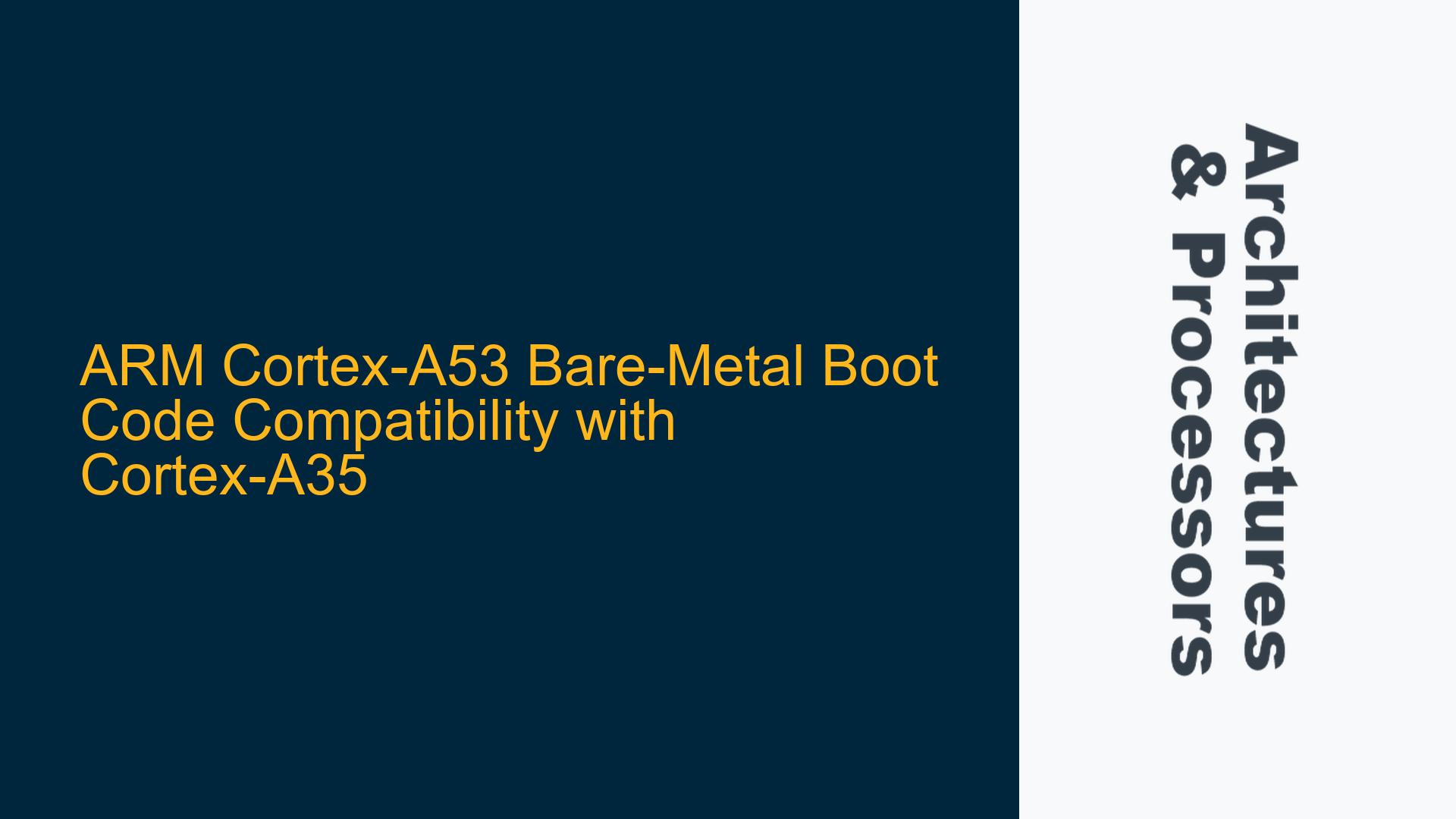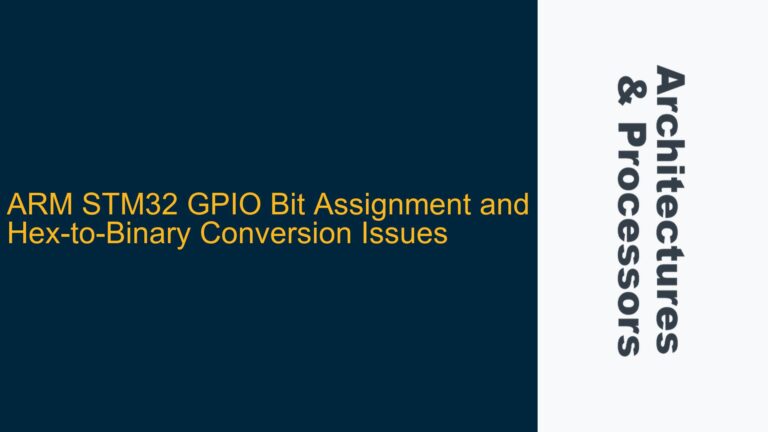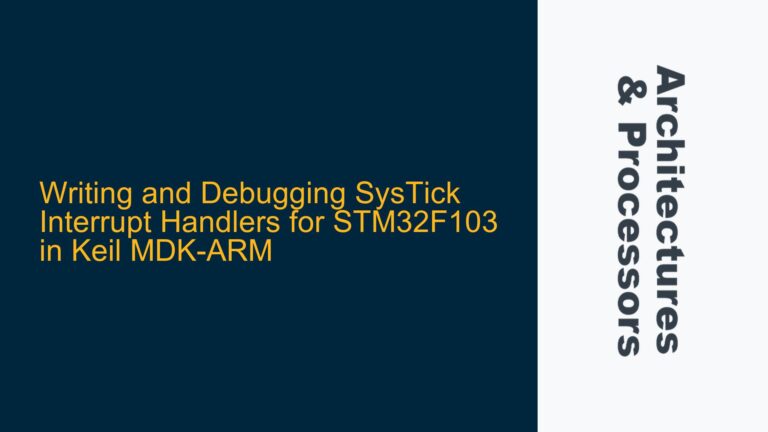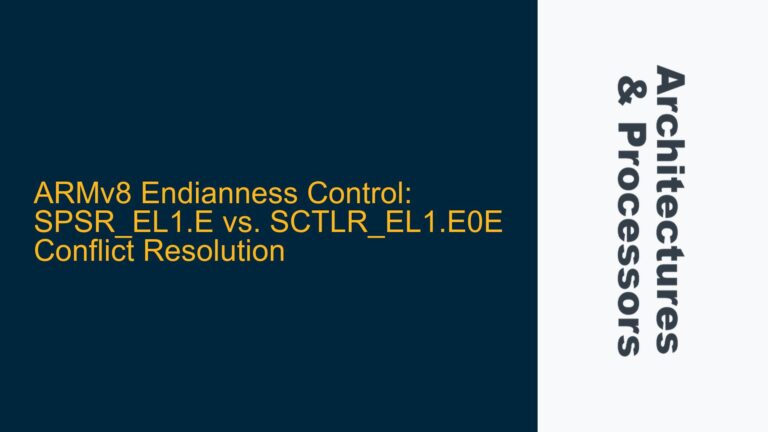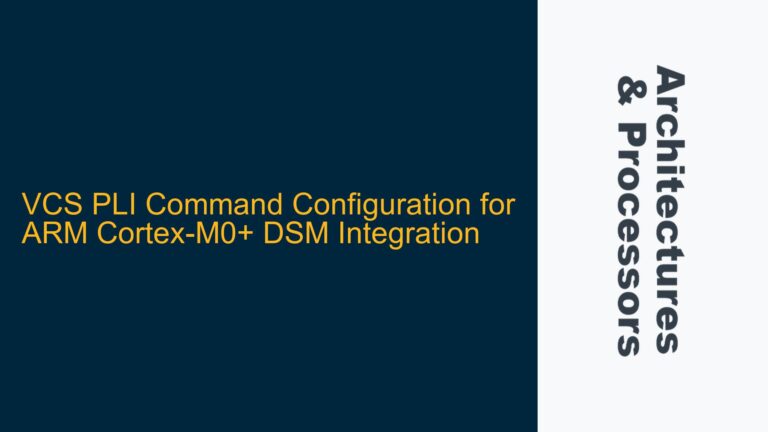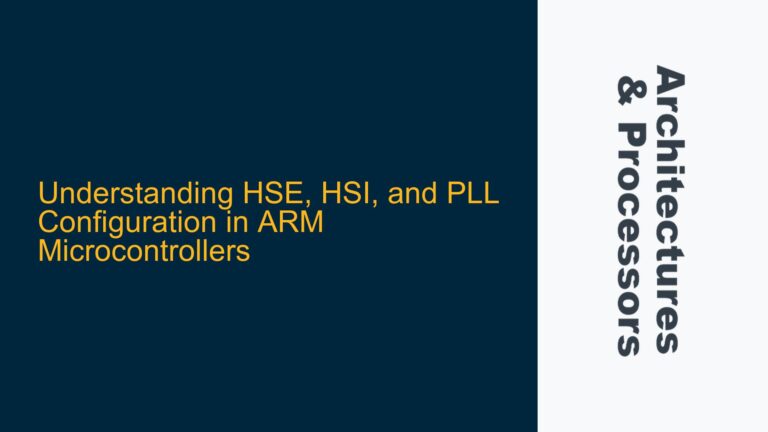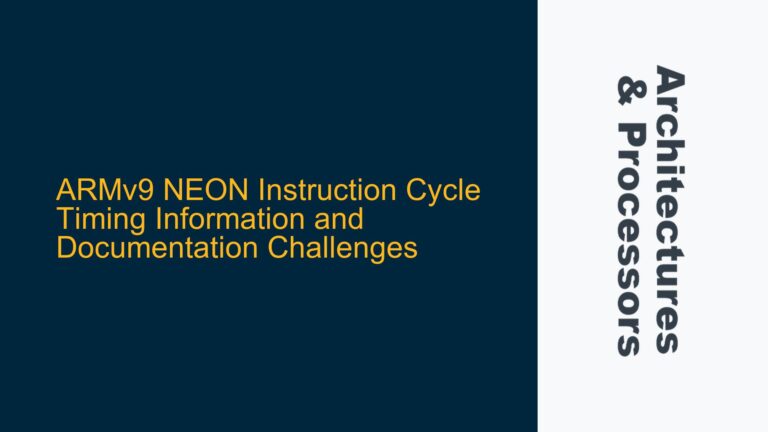ARM Cortex-A53 and Cortex-A35 Architectural Differences and Boot Code Implications
The ARM Cortex-A53 and Cortex-A35 are both 64-bit ARMv8-A processors, but they are designed for different performance and power efficiency targets. The Cortex-A53 is part of ARM’s "big.LITTLE" architecture, often used in high-performance applications, while the Cortex-A35 is optimized for ultra-low power consumption and is typically found in embedded and IoT devices. Despite sharing the ARMv8-A architecture, there are significant differences in their microarchitectures, instruction pipelines, and power management features that can affect the compatibility of bare-metal boot code.
The Cortex-A53 features an 8-stage pipeline with advanced branch prediction and out-of-order execution capabilities, whereas the Cortex-A35 has a simpler 8-stage in-order pipeline. This difference impacts how each core handles instruction fetching, decoding, and execution, which can lead to subtle timing and synchronization issues in boot code. Additionally, the Cortex-A53 supports more advanced power management states and clock gating techniques compared to the Cortex-A35, which may require specific initialization sequences in the boot code.
Another critical difference lies in the memory system. The Cortex-A53 typically includes a more complex memory hierarchy with larger caches and support for higher memory bandwidth, while the Cortex-A35 is designed with smaller caches and a simpler memory interface to reduce power consumption. This can affect how the boot code configures the memory controller, cache coherency, and memory protection units (MPUs).
Potential Issues with Reusing Cortex-A53 Boot Code on Cortex-A35
When attempting to reuse bare-metal boot code written for the Cortex-A53 on the Cortex-A35, several issues may arise due to the architectural and microarchitectural differences. One of the primary concerns is the initialization of the processor’s execution state. The Cortex-A53 and Cortex-A35 may have different reset behaviors, particularly in how they handle the transition from reset to the first instruction fetch. If the boot code assumes specific reset behaviors or register states that are unique to the Cortex-A53, it may fail to initialize the Cortex-A35 correctly.
Another potential issue is the configuration of the memory system. The Cortex-A53 boot code may include specific settings for cache sizes, cache policies, and memory controller configurations that are not applicable to the Cortex-A35. For example, the Cortex-A53 may support larger L2 caches, and the boot code might attempt to configure these caches in a way that is not supported by the Cortex-A35. This could lead to incorrect cache behavior, memory access violations, or even system hangs during boot.
Power management is another area where differences between the Cortex-A53 and Cortex-A35 can cause problems. The Cortex-A53 boot code may include power management routines that enable specific power states or clock gating techniques that are not supported by the Cortex-A35. If the boot code attempts to enable these unsupported features, it could result in improper power management, leading to excessive power consumption or even hardware damage.
Finally, the Cortex-A53 boot code may include specific optimizations or workarounds for known errata that are not applicable to the Cortex-A35. If these errata-specific code segments are executed on the Cortex-A35, they could cause unexpected behavior or system instability.
Steps to Adapt Cortex-A53 Boot Code for Cortex-A35
To adapt bare-metal boot code written for the Cortex-A53 to work on the Cortex-A35, a thorough review and modification of the code are necessary. The first step is to carefully analyze the Cortex-A53 boot code to identify any Cortex-A53-specific initializations, configurations, or optimizations. This includes reviewing the reset sequence, memory system configuration, power management routines, and any errata workarounds.
Once the Cortex-A53-specific code segments have been identified, they should be replaced or modified to align with the Cortex-A35’s architecture and microarchitecture. This may involve updating the reset sequence to match the Cortex-A35’s reset behavior, reconfiguring the memory system to account for the Cortex-A35’s smaller caches and simpler memory interface, and revising power management routines to use only the power states and clock gating techniques supported by the Cortex-A35.
In addition to modifying the boot code, it is essential to validate the changes on actual Cortex-A35 hardware. This can be done by running the modified boot code on a Cortex-A35 development board or emulator and verifying that the system boots correctly and operates as expected. Any issues that arise during validation should be carefully debugged, and further modifications to the boot code may be necessary to address these issues.
Finally, it is important to document the changes made to the boot code and the rationale behind these changes. This documentation will be valuable for future reference and for other developers who may need to work with the boot code on Cortex-A35-based systems.
Detailed Analysis of Cortex-A53 and Cortex-A35 Boot Code Compatibility
To provide a more detailed analysis of the compatibility issues between Cortex-A53 and Cortex-A35 boot code, let’s examine specific areas where differences between the two processors can impact the boot process.
Reset and Initialization Sequence
The reset and initialization sequence is one of the most critical parts of the boot code, as it sets up the processor’s execution state and prepares it for running the operating system or application software. The Cortex-A53 and Cortex-A35 have different reset behaviors, particularly in how they handle the transition from reset to the first instruction fetch.
The Cortex-A53 reset sequence typically involves initializing the processor’s registers, setting up the exception vectors, and configuring the memory system. The Cortex-A35 reset sequence may require different initializations, particularly in how the processor handles the transition from reset to the first instruction fetch. For example, the Cortex-A35 may require specific settings for the program counter (PC) and stack pointer (SP) registers that differ from those used in the Cortex-A53.
Additionally, the Cortex-A53 boot code may include specific initializations for features such as branch prediction, out-of-order execution, and advanced power management, which are not applicable to the Cortex-A35. These initializations should be removed or modified to align with the Cortex-A35’s simpler pipeline and power management features.
Memory System Configuration
The memory system configuration is another area where differences between the Cortex-A53 and Cortex-A35 can impact the boot process. The Cortex-A53 typically includes a more complex memory hierarchy with larger caches and support for higher memory bandwidth, while the Cortex-A35 is designed with smaller caches and a simpler memory interface to reduce power consumption.
The Cortex-A53 boot code may include specific settings for cache sizes, cache policies, and memory controller configurations that are not applicable to the Cortex-A35. For example, the Cortex-A53 boot code might configure the L2 cache with a specific size and associativity that is not supported by the Cortex-A35. This could lead to incorrect cache behavior, memory access violations, or even system hangs during boot.
To adapt the boot code for the Cortex-A35, the memory system configuration should be reviewed and modified to account for the Cortex-A35’s smaller caches and simpler memory interface. This may involve reducing the cache size, changing the cache policy, or simplifying the memory controller configuration.
Power Management
Power management is another area where differences between the Cortex-A53 and Cortex-A35 can cause problems. The Cortex-A53 supports more advanced power management states and clock gating techniques compared to the Cortex-A35. The Cortex-A53 boot code may include power management routines that enable specific power states or clock gating techniques that are not supported by the Cortex-A35.
If the boot code attempts to enable these unsupported features, it could result in improper power management, leading to excessive power consumption or even hardware damage. To avoid these issues, the power management routines in the Cortex-A53 boot code should be reviewed and modified to use only the power states and clock gating techniques supported by the Cortex-A35.
Errata Workarounds
The Cortex-A53 boot code may include specific optimizations or workarounds for known errata that are not applicable to the Cortex-A35. If these errata-specific code segments are executed on the Cortex-A35, they could cause unexpected behavior or system instability.
To address this issue, the boot code should be reviewed to identify any errata workarounds that are specific to the Cortex-A53. These workarounds should be removed or replaced with equivalent workarounds that are applicable to the Cortex-A35, if any exist.
Validation and Testing
After modifying the boot code to align with the Cortex-A35’s architecture and microarchitecture, it is essential to validate the changes on actual Cortex-A35 hardware. This can be done by running the modified boot code on a Cortex-A35 development board or emulator and verifying that the system boots correctly and operates as expected.
During validation, any issues that arise should be carefully debugged, and further modifications to the boot code may be necessary to address these issues. It is also important to test the boot code under different operating conditions, such as varying clock speeds, power states, and memory configurations, to ensure that it is robust and reliable.
Documentation
Finally, it is important to document the changes made to the boot code and the rationale behind these changes. This documentation will be valuable for future reference and for other developers who may need to work with the boot code on Cortex-A35-based systems. The documentation should include a detailed description of the modifications made to the reset sequence, memory system configuration, power management routines, and errata workarounds, as well as the results of the validation and testing process.
Conclusion
Adapting bare-metal boot code written for the ARM Cortex-A53 to work on the Cortex-A35 requires a thorough understanding of the architectural and microarchitectural differences between the two processors. By carefully reviewing and modifying the boot code to align with the Cortex-A35’s architecture, developers can ensure a successful boot process and reliable operation of the system. Validation and testing on actual Cortex-A35 hardware are essential to identify and address any issues that may arise during the adaptation process. Proper documentation of the changes and the rationale behind them will also be valuable for future reference and for other developers working with the boot code on Cortex-A35-based systems.
